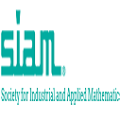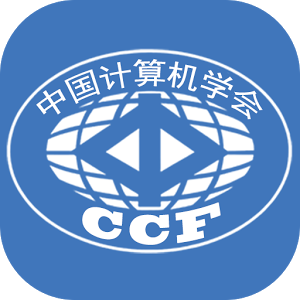【计算机类】国际会议约稿信息6条
人工智能
CSCI 2017
Annual Conference on Computational Science and Computational Intelligence
全文截稿: 2017-09-30
开会时间: 2017-12-14
会议难度: ★★
CCF分类: 无
会议地点: Las Vegas, USA
网址:http://americancse.org/events/csci2017
Computational Science and Computational Intelligence, both share the same objective: finding solutions to difficult problems. However, the methods to the solutions are different. The main objective of the CSCI Conference is to facilitate increased opportunities for cross-fertilization across CS and CI.
The CSCI Conference is committed to encouraging diversity and eliminating discrimination in both its role as a conference and as a provider of services. CSCI aims to create a culture that respects and values each others' differences, that promotes dignity, equality and diversity, and that encourages individuals to develop and maximize their true potential resulting in diversity of products and diversity of solutions to challenging research problems. We are committed wherever practicable to organizing a conference that broadly reflects the international community.
软件工程
ISPASS 2018
International Symposium on Performance Analysis of Systems and Software
摘要截稿: 2017-10-06
全文截稿: 2017-10-13
开会时间: 2018-04-03
会议难度: ★★★
CCF分类: C类
会议地点: Belfast, Northern Ireland
网址:http://www.ispass.org/ispass2018/
The IEEE International Symposium on Performance Analysis of Systems and Software (ISPASS) provides a forum for sharing advanced academic and industrial research work focused on performance analysis in the design of computer systems and software. ISPASS 2018 will be held April 3 through 5, 2018 in Belfast, Northern Ireland (UK). Authors are invited to submit previously unpublished work for possible presentation at the conference. Papers are solicited in fields that include the following:
-Performance and power evaluation methodologies
-Foundations of performance and power analysis
-Power/Performance analysis of commercial and experimental hardware
-Power/Performance analysis of emerging workloads and software
-Application and system code tuning and optimization
-Confirmations or refutations of important prior results
In addition to research papers, ISPASS welcomes tool and benchmark papers. The conference is an ideal forum to publicize new tools and benchmarks for the community. These papers, which can detail tools and benchmarks in any of the above fields of interest, will be judged primarily on their potential impact and use, rather than on their research contribution.
数据库管理与信息检索
SDM 2018
SIAM International Conference on Data Mining
摘要截稿: 2017-10-06
全文截稿: 2017-10-13
开会时间: 2018-05-03
会议难度: ★★★★
CCF分类: B类
会议地点: San Diego, USA
网址:http://www.siam.org/meetings/sdm18/
Data mining is the computational process for discovering valuable knowledge from data – the core of modern Data Science. It has enormous applications in numerous fields, including science, engineering, healthcare, business, and medicine. Typical datasets in these fields are large, complex, and often noisy. Extracting knowledge from these datasets requires the use of sophisticated, high-performance, and principled analysis techniques and algorithms. These techniques in turn require implementations on high performance computational infrastructure that are carefully tuned for performance. Powerful visualization technologies along with effective user interfaces are also essential to make data mining tools appealing to researchers, analysts, data scientists and application developers from different disciplines, as well as usable by stakeholders.
SDM has established itself as a leading conference in the field of data mining and provides a venue for researchers who are addressing these problems to present their work in a peer-reviewed forum. SDM emphasizes principled methods with solid mathematical foundation, is known for its high-quality and high-impact technical papers, and offers a strong workshop and tutorial program (which are included in the conference registration). The proceedings of the conference are published in archival form, and are also made available on the SIAM web site.
Topics:
-Methods and Algorithms
-Applications
-Human Factors and Social Issues
人工智能
IEVDL 2017
NIPS 2017 Workshop- Interpreting, Explaining and Visualizing Deep Learning - Now what ?
全文截稿: 2017-10-22
开会时间: 2017-12-09
会议难度: ★★★
CCF分类: 无
会议地点: Long Beach, CA
网址:http://www.interpretable-ml.org/nips2017workshop/
We call for papers on the following topics:
- interpretability of deep neural networks
- analysis and comparison of state-of-the-art models
- formalization of the interpretability problem
- interpretability for making ML socially acceptable
- applications of interpretability.
Submissions are required to stick to the NIPS format. Papers are limited to eight pages (excluding references) and will go through a review process. A selection of accepted papers together with the invited contributions will be part of an edited book at Springer LNCS.
计算机综合与前沿
ICoAC 2017
INTERNATIONAL CONFERENCE ON ADVANCED COMPUTING
全文截稿: 2017-10-23
开会时间: 2017-12-14
会议难度: ★★
CCF分类: 无
会议地点: Chennai
网址:http://www.icoac.mitindia.edu/
ICoAC 2017 is an international conference in the field of Computer Science and Communication, focusing to address issues and developments in advanced computing. This conference seeks to bring together international researchers to present papers and generate discussions in recent trends and developments of computing. The conference will feature a range of presentations on latest research activities as well as stimulating talks and keynote addresses. It is organized by the Department of Computer Technology annually during December.
Accepted research papers will be submitted for inclusion to IEEE Xplore. The extended version of high-quality innovative research papers from the registered papers presented at the conference will be considered for publications in SCI and Scopus Indexed Journal.
计算机网络
IWEF 2018
International Workshop on Edge and Fog Systems for 5G & Beyond
全文截稿: 2017-10-23
开会时间: 2018-04-15
会议难度: ★★
CCF分类: 无
会议地点: Barcelona, Spain
The First International Workshop on Edge and Fog Systems for 5G & Beyond (IWEF) will be held in Barcelona, Spain on April 15, 2018 in conjunction with IEEE WCNC 2018.
In addition to Clouds, the Edge and Fog are emerging as defining locations in 5G where much of the network intelligence and service innovation could also be envisioned. The move to the Edge was originally driven by the desire of operators and cloud providers to deliver low latency services and avert inevitable network congestion by keeping locally a huge amount of local traffic. The list of usages and opportunities brought by the Edge and Fog could only grow quickly especially when imagined with network softwarization tools of SDN and NFV. The move to the Edge has also helped the rediscovery of a wealth of dormant assets in the local access network. These dormant assets are essentially contextual information collected from the users, devices, and nodes. Putting this data on offer to application and service providers keen on optimizing and customizing their service delivery to the end customers proved compelling for all stakeholders.
The rich Edge and Fog ecosystem and bigger value one can deliver by interconnecting these with the cloud led to the launch of industry initiatives recently such as ETSI MEC and Open Fog Consortium. This workshop provides a forum for scientists, engineers, and researchers to discuss and exchange new ideas, novel results and experience on all aspects of delivering an integrated virtualized edge and fog system. Several challenges lie ahead such as: (1) Identifying which context information and what functions from each access network may be of value to host at the Edge either to improve own access network services or other services from other access networks separately or jointly; (2) Defining mechanisms to collect and deliver this context information where and when it is needed, as well as the placement and chaining of access network functions throughout the Edge; (3) Exploring which access network entities (including terminal devices) could offer their resources and capabilities to dynamically scale the integrated edge; (4) Designing automated and secure mechanisms to discover and federate all the edge resources which may be volatile/mobile, heterogeneous, not directly interconnected, and may belong to multiple owners; and (5) Defining all the interactions that need to be supported between the edge and non-edge domains such as the transport network, core network, and distant clouds.
登录查看更多
相关内容
2019年IEEE系统和软件性能分析国际研讨会由IEEE计算机学会互联网技术委员会、计算机体系结构技术委员会和微程序和微体系结构技术委员会主办。官网链接:http://ispass.org/ispass2020/
Arxiv
3+阅读 · 2020年4月13日
Arxiv
16+阅读 · 2020年1月2日
Arxiv
4+阅读 · 2018年1月30日





